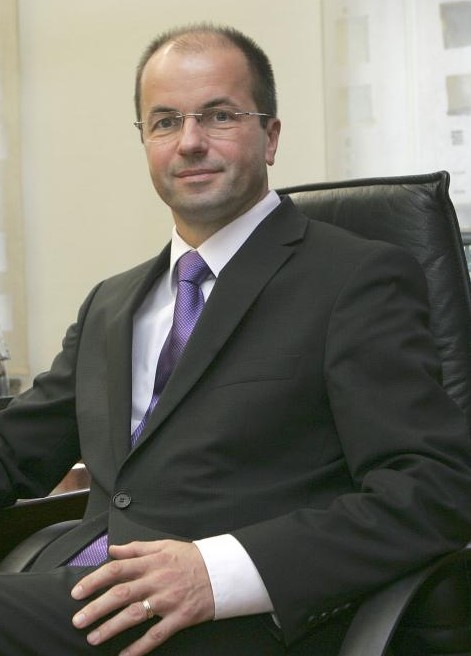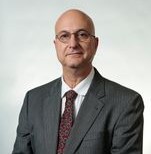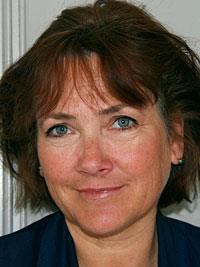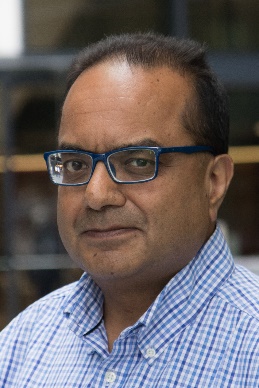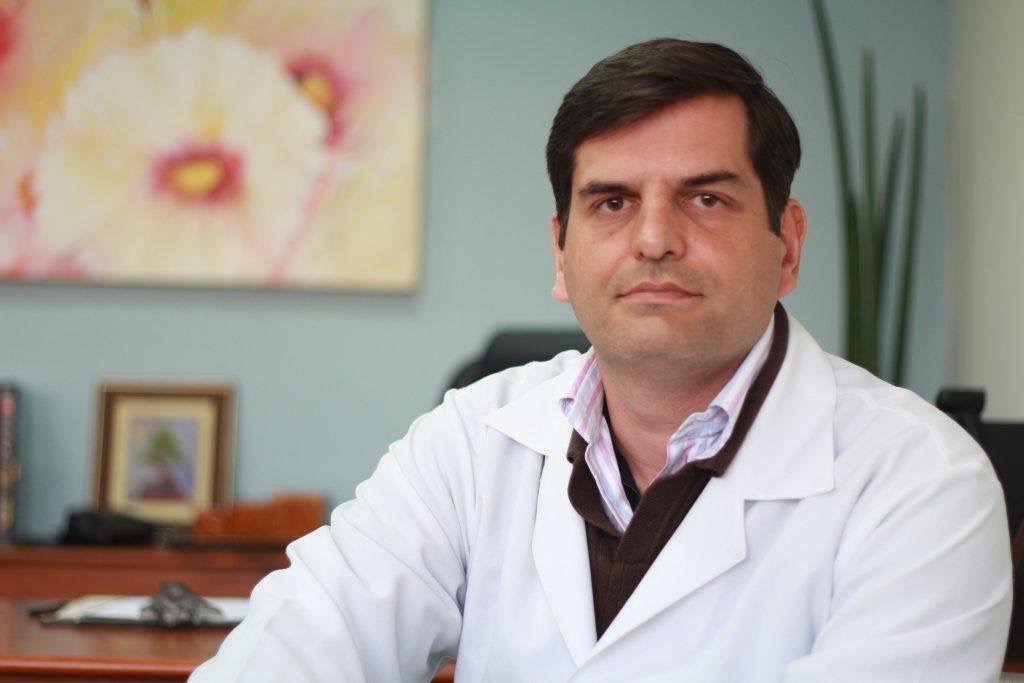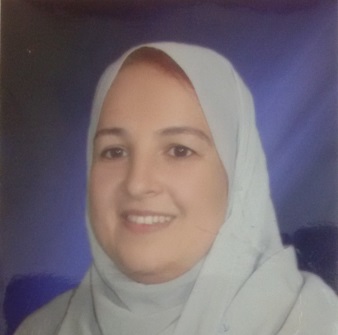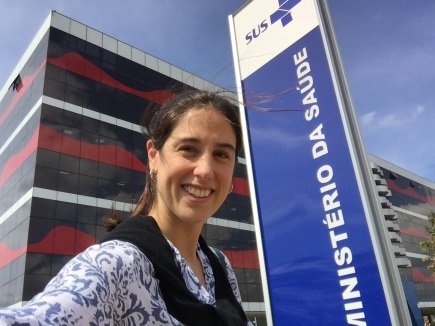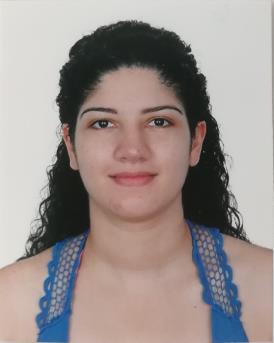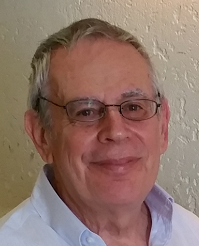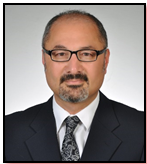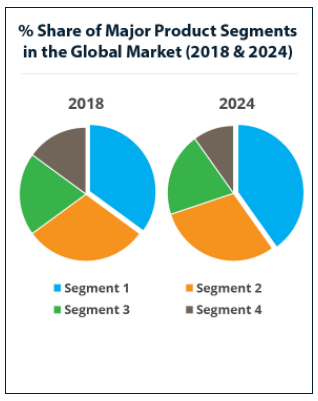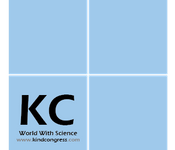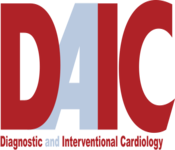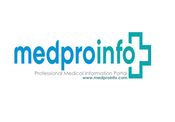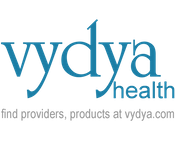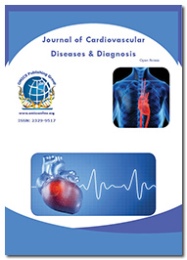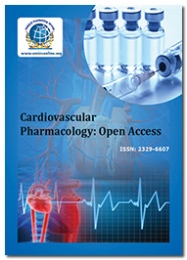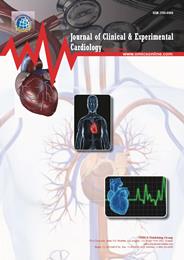Theme: Therapeutic Advances in Heart Diseases
CVDT 2018
Despite being one of the leading causes of death globally, it is estimated that around 90% of Cardiovascular Diseases (CVD) are preventable. A class of diseases that involve the heart or blood vessels, the risk factors mainly include age, physical inactivity/obesity, use of substances like tobacco, genetic predisposition or raised blood pressure, sugar or cholesterol.
Conference Series LLC is proud to present the International Conference on Cardiovascular Diseases and Therapeutics (CVDT) which will be held on November 21-22, 2018 in Paris, France.
With the theme "Therapeutic Advances in Heart Diseases", the conference aims to bring together cardiologists, cardiac surgeons, researchers and students in the field and medical professionals/businessmen from all around the globe under one roof to deliberate on the latest trends in the treatment of Cardiovascular diseases and other diseases that ail our heart and weigh in on the efficacy of the same.
Why to attend?
The International Conference on Cardiovascular Diseases and Therapeutics is set to be among the World’s leading Cardiology Conference. Broadly acclaimed speakers, the most recent frameworks, methodologies, and the most current updates in Cardiology field are indications of this conference. The Conference will comprise of major sessions designed to offer comprehensive lectures that address current issues in various field of Cardiovascular & cardiac diseases. The benefits provided to the attendees are:
- Certificates will be provided to all speakers, delegates and students
- Opportunity to meet world’s renowned at this event
- Keynote forums by Prominent Physicians & Professors
- Best platform for Global business and networking opportunities
- Oral/Poster presentations by Young Researchers
- Best poster award for students
Abstract Submissions
CVDT 2018 invites the submission of abstracts of original work. Abstracts must be submitted on the understanding that they have not been presented elsewhere (except in the form of a thesis) and are not currently under consideration by another conference. The submitting speaker should ensure that the abstract publication has been approved by all other co-authors.
Modes of Presentation
-
Oral presentation
-
Poster presentation
Language
All abstracts must be written exclusively in English (including the title, abstract text, author names and affiliations).
Correspondence
Please provide the following:
Presenting author’s contact details including full mailing address, office phone number, email address and fax number
Name(s) of presenting author and co-authors: first name(s) or initials of first name(s), family name (e.g. Jason Wong or J. Wong)
Affiliation details of all authors: Department, institution/hospital, city, state (if relevant), country.
Financial Assistance
As a non-funded organization, Conference Series LLC cannot give any attendee full waiver on Registration and/or Accommodation or provide any grants for travel. However, in special cases, a participant, especially from lower-income & lower-middle-income economies (World Bank Classification for 2019 fiscal year) may apply for financial assistance in writing to the Program Manager for consideration. The decision of a waiver is made by the Organizers based on the applicant's affiliation, abstract and experience. We recommend participants to provide a detailed and up-to-date biography while submission of abstract.
Conference Series LLC also issues a Letter of Acceptance on request to participants who require it to apply for financial assistance at their University/Institution.
VISA Application
Conference Series LLC will issue a Letter of Attendance to registered candidates if needed for VISA application. However, the Organizing Committee or Conference Series LLC will not be in correspondence with the Embassy/Consulate or the Ministry of Foreign Affairs incase the VISA application of a potential attendee is rejected.
Cardiovascular Diseases
Cardiovascular disease (CVD) is a general term for conditions affecting the heart or blood vessels. It's usually associated with a build-up of fatty deposits inside the arteries – known as atherosclerosis – and an increased risk of blood clots. It can also be associated with damage to arteries in organs such as the brain, heart, kidneys and eyes.CVD is the number one cause of death worldwide, with an estimated 17.7 Million deaths in 2015, with around 7.4 Million (over 41%) of these due specifically to CHD and about 6.7 Million (just over 39%) specifically due to stroke (WHO, 2017). The total economic impact of CVD, including both direct costs such as treatments and indirect costs such as productivity loss, is considerable and varies between countries.
Vascular Diseases
Vascular disease is caused by inflammation and weakness of the veins and arteries – and by the build-up of fatty deposits in the blood vessels. The accumulation of these deposits happens over a long period of time and can be virtually symptomless until the arteries and veins become so damaged, the blood flow to vital organs and muscles is compromised and causes lack of mobility, pain and tissue death.
Vascular disease is the most common precursor to coronary heart disease and heart attack, it also causes stroke by affecting the arteries in your neck.
One of the most common forms of vascular disease is peripheral arterial disease (PAD), which is when the arteries in your legs are affected. It is estimated that 9% of the population suffer from PAD, which causes painful legs when walking, ulceration and amputation.
Cardiovascular Pharmacology and Therapeutics
Treatment of cardiovascular (CV) disease often requires the administration of numerous medications for long periods of time to patients likely to be old and suffering from a range of co-morbid conditions. Rational prescribing informed by clinical pharmacology is essential if the right drug is to be administered to the right patient, at the right time, and for the right price. This requires an appreciation of the key principles of clinical pharmacology, and specific knowledge of individual therapies. Knowledge of polypharmacy and drug interactions is crucial, and the pharmacokinetic and pharmacodynamic challenges associated with advanced patient age, co-morbidity, and sometimes frailty must be addressed and overcome. The environmental and genetic determinants of variability in response to treatment are increasingly well understood, and new biomarkers and pharmacogenetic techniques provide the foundations of the emerging discipline of personalized medicine. Long-term preventive medication raises issues concerning safety, adherence, and cost to healthcare providers.
Cardiac Arrhythmias and Device Therapy
Cardiac arrhythmias are any abnormality or perturbation in the normal activation sequence of the myocardium. The sinus node, displaying properties of automaticity, spontaneously depolarizes, sending a depolarization wave over the atrium, depolarizing the atrioventricular (AV) node, propagating over the His-Purkinje system, and depolarizing the ventricle in systematic fashion. There are hundreds of different types of cardiac arrhythmias. The normal rhythm of the heart, so-called normal sinus rhythm, can be disturbed through failure of automaticity, such as sick sinus syndrome, or through overactivity, such as inappropriate sinus tachycardia. Ectopic foci prematurely exciting the myocardium on a single or continuous basis results in premature atrial contractions (PACs) and premature ventricular contractions (PVCs). Sustained tachyarrhythmias in the atria, such as atrial fibrillation, paroxysmal atrial tachycardia (PAT), and supraventricular tachycardia (SVT), originate because of micro- or macro re-entry. In general, the seriousness of cardiac arrhythmias depends on the presence or absence of structural heart disease.
Cardiovascular Drugs
The 10 drugs we’re profiling here represent the largest in the market by global 2016 sales, excluding those that faced generic competition throughout the year. We included drugs that kept their exclusivity into last year, such as AstraZeneca’s Crestor, which faced generics as of July. But we left out brands that went generic prior to January 1, 2016, including Pfizer’s Lipitor, which is still bringing in blockbuster branded sales—$1.75 billion last year, to be exact. All the sales numbers are courtesy of EvaluatePharma, which ran its exclusive analysis for us in August 2017.
Pediatric Cardiology
In childhood, a disorder which involves both the heart and lungs problems, called Pediatric Cardiopulmonary disease. Epicardial adipose tissue (EAT) is the visceral fat deposit over the heart and is often increased in obese subjects. EAT is connected to Cardio Metabolic risk factors and non-alcoholic fatty liver disease (NAFLD) in adults, but this relationship is not well known in children. (MI) Myocardial infarction is rare in childhood and adolescence. Children usually have either an acute inflammatory condition of the coronary arteries diseases or an anomalous origin of the left coronary artery (LCA). Peripheral vascular diseases are circulation ailment that affect blood vessels inside the heart and brain. In PVDs, blood vessels are narrowed. Narrowing is generally caused by arteriosclerosis. The discussion about the widespread problem of the baby heart diseases as Myocarditis, Hypertension, Cardiomyopathy, Heart Murmur, Hypoplastic Left Heart Syndrome, Pericarditis Effusion, Cardiac Arrest, Arrhythmogenic Right Ventricular Dysplasia, Cyanotic Heart Disease, and Pediatric Arrhythmia.
Coronary Artery Disease
Heart disease is the leading cause of death for people of most racial/ethnic groups in the United States, including African Americans, Hispanics and Whites. For Asian Americans or Pacific Islanders and American Indians or Alaska Natives, heart disease is second only to cancer. In the United States, someone has a heart attack every 34 seconds. Every 60 seconds, someone in the United States dies from a heart disease-related event. Heart disease is the leading cause of death for both men and women. More than half of the deaths due to heart disease in 2009 were in men. Coronary artery disease (CAD) is the most common type of heart disease, killing over 370,000 people annually. Every year about 735,000 Americans have a heart attack. Of these, 525,000 are a first heart attack and 210,000 happen in people who have already had a heart attack.
Cardiac Nursing
Financed through a four-year, $1.9 million gift from the National Institutes of Health (NIH), the middle yearly wage for enrolled medical attendants was $65,470 in May 2012. Job of enrolled medical attendants is anticipated to grow 19 percent from 2012 to 2022.
Cardiovascular nursing is a nursing strength that works with patients who experience the ill effects of sundry states of the cardiovascular framework. Cardiovascular restoration (heart recovery) is a professionally managed project to profit individuals instaurate from heart assaults, heart surgery and percutaneous coronary intercession (PCI) techniques, for example, stenting and angioplasty. Heart disappointment care administration or patient unending consideration administration is a human services circulation model where every tolerant's one of a kind medicinal needs and objectives of consideration are composed and imparted for the best conceivable results.
Hypertension, Stress and Stroke
Cardiovascular reactivity reflects underlying sympathetic nervous system activation and has been shown to vary according to individual characteristics (eg, personality factors, emotions), environmental exposures (eg, job stress, socioeconomic adversity), interpersonal and social contexts and interactions, and genetic predispositions to disease (eg, positive family history of hypertension or heart disease).Typically, this sympathetic hyperreactivity is manifest as excessive blood pressure (BP) or heart rate responses to psychological or behavioral stressors or stressful situations. Several human and animal studies support the hypothesis that exaggerated hemodynamic or cardiovascular reactivity to stress contributes to elevations in BP, carotid atherosclerosis, and coronary artery disease.
Cardiovascular Devices
Cardiovascular devices are used to treat and diagnose heart disorders. In the United States, heart diseases and strokes are the first and fifth most prevalent causes of death, respectively. According to a 2015 report from the American Heart Association, about 85.6 million people in the US suffer from cardiovascular diseases (or CVD). Major drivers for the US cardiovascular device segment are an aging population, unhealthy lifestyle trends, and increasing demand for minimally invasive surgeries.
Cardiac rhythm management devices, interventional cardiac devices, and cardiac prosthetic devices are the major categories of cardiovascular devices.
Cardiology Case Studies
All our Cardiology conferences have Case Studies that act as informative examples to people who might also face similar problems. Generally, Case Studies in Cardiovascular Medicine, should detail a particular medical case, reporting the background of the patient. They should discuss investigations undertaken in order to determine a diagnosis or differentiate between possible diagnoses, and should indicate the type of treatment the patient underwent as a result. In one piece we can conclude that Case Studies are an useful and informative part of every doctor or physician's medical education, which actually encourage us to include this session track in our International Cardiovascular Diseases and Therapeutics Conference which is going to be held at Paris, France.
Cardiac Surgery
Cardiac surgery, or cardiovascular surgery, is the surgery of heart or great vessels. It is often carried out to treat complications of ischemic heart disease; to correct congenital heart disease; or to treat valvular heart disease due to various causes, which include endocarditis, rheumatic heart disease, and atherosclerosis. Other surgeries include Minimally Invasive Heart Surgery, Ventricular Assist Devices (VADs), heart transplantation and much more.
Congenital Heart Defects
A congenital heart defect is a problem with the structure of the heart which is present since birth. Congenital heart defects are the most common type of birth defects. The defects can involve the walls of the heart, the valves of the heart, and the arteries and veins near the heart. They can disrupt the normal flow of blood through the heart. The blood flow can slow down, go in the wrong direction or to the wrong place, or be blocked completely.
Silent Ischemia and Ischemic Heart Disease
Many Americans may have ischemic episodes without knowing it. These people have ischemia without pain — silent ischemia. They may have a heart attack with no prior warning. People with angina also may have undiagnosed episodes of silent ischemia. In addition, people who have had previous heart attacks or those with diabetes are especially at risk for developing silent ischemia.
Having an exercise stress test or wearing a Holter monitor – a battery-operated portable tape recording that measures and records your electrocardiogram (ECG) continuously, usually for 24-48 hours – are two tests often used to diagnose this problem.
Sports and Exercise Medicine
Over the years, sports medicine has expanded to include not only competitive athletes but also anyone who exercises (amateur or professionals). Although sports can confer heroic fitness to athletes, there is a risk of sports-related sudden cardiac death. The societal and media response to such tragic deaths by an athlete garners negative publicity, although the general benefits of exercise outweigh the risk. Commonly, sudden cardiac death is triggered by a malignant tachyarrhythmia such as ventricular fibrillation (VF) or ventricular tachycardia degenerating into VF. There is typically an underlying substrate for arrhythmia trigger, such as hypertrophic cardiomyopathy, channelopathies, arrhythmogenic cardiomyopathy, or coronary congenital abnormalities, among others.
Cardio-oncology
Cardio-oncology is the intersection of heart conditions in patients who have been treated for cancer. Cardiologists can assess patients for potential risk of developing heart conditions if patients take certain types of cancer drugs, or following radiation treatment to the chest. They also help oncologists protect their patients during treatment by closely watching the heart and recognizing heart trouble early in treatment.
Anticoagulant Management
The management of anticoagulation in patients undergoing surgical procedures is challenging because interrupting anticoagulation for a procedure transiently increases the risk of thromboembolism. At the same time, surgery and invasive procedures have associated bleeding risks that are increased by the anticoagulant(s) administered for thromboembolism prevention. If the patient bleeds from the procedure, their anticoagulant may need to be discontinued for a longer period, resulting in a longer period of increased thromboembolic risk. A balance between reducing the risk of thromboembolism and preventing excessive bleeding must be reached for each patient.
Related Conferences: Cardiovascular 2018 | Cardiology Meetings | Cardiovascular Conferences | Cardiology Conferences
Related Conferences 22nd World Cardiology Conferences December 11-12, 2017 Rome, Italy; World Echo Summit 2017 4-6 October 2017 Brazil; International Heart Failure Conferences 24-25 November, 2016 Abu Dhabi, UAE; 3rd World Heart Congress April 19-20, 2018 Amsterdam, Netherlands ; International Cardiovascular conferences January 5-7, 2018 in Bangkok, Thailand; International Conference for Innovations in Cardiovascular Systems December 3-5, 2017 Israel; CRT 2018 March 03-06,2018 Washington, DC; ASE 2018 June 22-26, 2018 Nashville, Tennessee; Cardio Rhythm 2017 February 24- 26,2017 Canadian Cardiovascular Congress, Oct 21-24, 2017, Vancouver, Canada, American Heart Association(AHA) Nov 11-15, 2017, Anaheim, California; 27thCardiovascular Conferences February 9-14, 2018,Colorado; Clinical Cardiology Conferences, May 24-26, 2018 London, UK; Heart Surgery & Cardiology Conferences,September21-22,2017 Texas, USA; Heart Conferences, December 04-05, 2017 Dallas, Texas, USA, 25th Euro Congress on Pediatric Heart Disease and Health, August 13-14, 2018 Dublin, Ireland; Heart Diseases Conferences, Toronto, Canada September 18-19, 2017.
Related Societies:
USA: The American Society for Preventive Cardiology; American Society of Nuclear Cardiology; American Heart Association; ACC;American Stroke Association; Society for Cardiovascular Angiography and Interventions; Arizona Society of Echocardiography; Brazilian Society of Cardiology; Heart Failure Society of America; Canadian Association of Cardiovascular Prevention and Rehabilitation; Elsevier Society Partners in Cardiology; American Society for Preventive Cardiology; American Society of Echocardiography; American Society of Hypertension; Brazilian Society of Hypertension; Canadian Cardiovascular Society; Argentine Society of Cardiology; Canadian Association of Interventional Cardiology; The American Association of Cardiovascular and Pulmonary Rehabilitation; The Society for Cardiovascular Angiography and Interventions Foundation.
Europe: European Society of Cardiology; British Cardiovascular Society; World Heart Federation; British Association for Cardiovascular Prevention and Rehabilitation; World Heart Failure Society; Austrian Heart Foundation; Austrian Society of Cardiology; Philippine Heart Association; Belgian Society of Cardiology; Spanish Society of Cardiology; British Cardiac Society; International Academy of Cardiology; British Heart Foundation; British Hypertension Society; British Junior Cardiologists Association; Croatian Cardiac Society; European Cardiology Congress; European Society of Cardiology; British cardiology society; Danish Society of Cardiology; Estonian Society of Cardiology; European Society for Cardiovascular Surgery; Finnish Cardiac Society; Georgian Society of Cardiology; German Cardiac Society; German Heart Foundation; Hellenic Society of Cardiology; Hungarian Society of Cardiology; Icelandic Society of Cardiology; International Society for Vascular Surgery.
Asia Pacific: Asian Pacific Society of Cardiology; Cardiac Society of Australia & New Zealand; Russian Society of Cardiology; The Japanese Heart Failure Society; Japanese Society of Echocardiography; The World Society of Cardiovascular & Thoracic Surgeons; Asian Pacific Society of Hypertension; Association of Cardiologists of Kazakhstan; Australian Cardiovascular Health and Rehabilitation Association; Association of Thoracic and Cardiovascular Surgeons of Asia; Chinese Society of Cardiology; The Pan-African Society of Cardiology (PASCAR); Association of Pediatric Cardiology; Cardiological Society of India; Asian Society of Cardiovascular Imaging; Association of Black Cardiologists; Algerian Society of Hypertension; Asian Society of Cardiothoracic Anaesthesia; Asian Society of Cardiovascular Imaging; Association of Thoracic and Cardiovascular Surgeons of Asia; Emirates Cardiac Society; Gulf Heart Association; Indian Association of Cardiovascular-Thoracic Surgeons; Indonesian Heart Association; International Cardiac Pacing and Electrophysiology Society.
Top five drivers of cardiovascular market growth
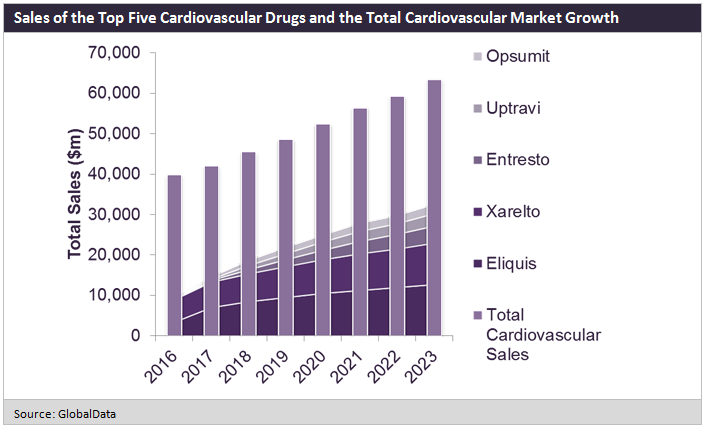
Total sales for cardiovascular diseases will grow steadily over the next six years, reaching about $60B in 2023. The top five major drivers of this growth will be two anticoagulants (Bristol-Myers Squibb’s [BMS’] Eliquis [apixaban] and Johnson & Johnson [J&J]/Bayer’s Xarelto [rivaroxaban]), a heart failure drug (Novartis’s Entresto [sacubitril/valsartan]) and two drugs for pulmonary arterial hypertension (J&J’s Opsumit [macitentan] and Uptravi [selexipag]). These five drugs will represent 50% of the total cardiovascular market in 2023, while Eliquis and Xarelto alone will represent 36% of the whole cardiovascular market. Cholesterol-lowering drugs were not part of this analysis, as they were considered to be part of the metabolic disorders therapeutic area.
Global cardiovascular devices market is anticipated to reach USD 121 billion by 2024, according to a new report by Grand View Research, Inc. Increasing geriatric population, sedentary life style coupled with unhealthy dietary habits is spurring the prevalence of cardiovascular diseases. Constant rise in the patients suffering from cardiovascular diseases and is expected to drive market growth during the forecast period.
Governments are trying to limit hospital readmissions to reduce the prevalence of hospital acquired infections (HAIs) by imposing penalties on hospitals. As a result, adoption of home healthcare, remote patient monitoring, and long term care services is rapidly increasing. Thus, demand for cardiovascular devices is increasing from hospitals, patients based in home settings, and long term care centers.
In addition, favorable government policies such as reimbursement coverage are fueling adoption of these devices. Thus, increasing target patient population, rising acceptance of home healthcare, and favorable government policies are some of the major factors driving the growth of the global cardiovascular devices market.
On the other hand, high device cost and stringent regulatory approval procedure are some of the prime factors challenging the growth of the market. In addition, lack of skilled professionals to perform surgical procedures using advanced devices is impeding the adoption of new devices.
The global cardiac monitoring market is expected to register a CAGR of around 4%. North America accounted for the highest market value in 2017. However, Middle East & Africa is expected to register the highest CAGR during the forecast period.
Cardiovascular diseases have become one of the primary reasons for mortality and are becoming a major concern in most parts of the world. Coronary heart disease (CHD) is the most common type of heart disease, with a death toll of more than 370,000 people annually. The American Heart Association (AHA) reports cardiovascular disease to be the leading global cause of death, accounting for 17.3 million deaths per year, a number that is expected to grow to more than 23.6 million by 2030. The Heart Foundation also states that CVD is a major cause of death in Australia, with 45,053 deaths attributed to CVD in the country, in 2014.
Annual Market Size Forecasts by Geographic Region:
Market Segmentation:
Segment 1: ECG Systems
Segment 2: Hoter Monitors
Sement 3: Implantable Loop Recorders
Segment 4: Others
Conference Highlights
- Cardiovascular Diseases
- Vascular Diseases and treatment
- Cardiovascular Pharmacology and Therapeutics
- Cardiac Arrhythmias and Device Therapy
- Cardiovascular Drugs
- Pediatric Cardiology
- Coronary Artery Disease
- Cardiac Nursing
- Hypertension, Stress and Stroke
- Cardiovascular Medicial Devices
- Clinical Cases In Cardiology
- Cardiac Surgery
- Cardiac Diagnostic Tests
- Congenital Heart Defects: Anatomy and Care
- Heart Failure and Cardiomyopathies
- Silent Ischemia and Ischemic Heart Disease
- Sports and Exercise Cardiology
- Cardio-Oncology
- Anticoagulation management
To share your views and research, please click here to register for the Conference.
To Collaborate Scientific Professionals around the World
| Conference Date | November 21-22, 2018 | ||
| Sponsors & Exhibitors |
|
||
| Speaker Opportunity Closed | Day 1 | Day 2 | |
| Poster Opportunity Closed | Click Here to View | ||
Useful Links
Special Issues
All accepted abstracts will be published in respective Our International Journals.
- Journal of Cardiovascular Diseases & Diagnosis
- Journal of Clinical & Experimental Cardiology
- Cardiovascular Pharmacology: Open Access
Abstracts will be provided with Digital Object Identifier by





